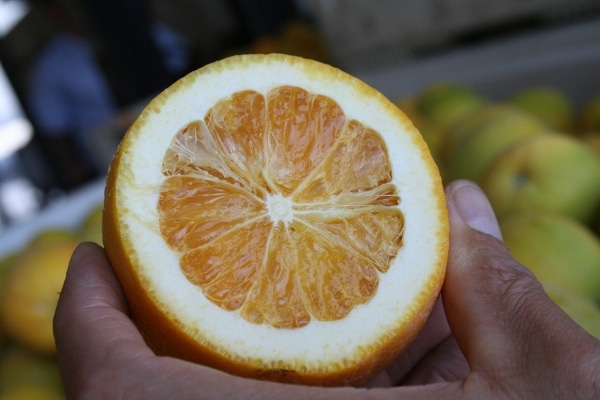
The U.S. Department of Agriculture has awarded $20.1 million in grants to university researchers for research and Extension projects to help citrus producers fight the disease Huanglongbing (HLB), also known as citrus greening disease.
The grants include almost $4 million to the University of California, Riverside, Calif. The funding will study virulence proteins from the pathogen to detect its presence before symptoms appear and to develop strategies for creating citrus rootstocks that are immune to HLB.
The funding is available through the Specialty Crop Research Initiative (SCRI) Citrus Disease Research and Extension Program (CDRE). CDSRE was authorized by the 2014 farm law and is administered by USDA's National Institute of Food and Agriculture (NIFA).
“Citrus greening has affected more than 75 percent of Florida citrus crops and threatens production all across the United States,” says Agriculture Secretary Tom Vilsack.
“The research and Extension projects funded today bring us one step closer to providing growers real tools to fight this disease, from early detection to creating long-term solutions for the industry, producers, and workers."
Since the SCRI CDRE program's inception in 2014, USDA has granted $43.6 million in research dollars to combat the destructive HLB.
The disease was initially detected in Florida in 2005 and has since affected the vast majority of Florida’s citrus-producing areas.
HLB has also been detected in Georgia, Louisiana, South Carolina, and Texas and in 11 residential trees in California’s Los Angeles Basin.
The 2015 fiscal year grants were awarded to the following universities and government entities.
University of California, Riverside, Calif., $3,990,772
University of Central Florida, Orlando, Fla., $1,975,000
University of Florida, Gainesville, Fla., $2,800,000
University of Florida, Gainesville, Fla., $3,999,508
USDA Agricultural Research Service, Ithaca, N.Y., $1,951,763
New Mexico Consortium, Los Alamos, N.M., $3,320,000
Washington State University, Pullman, Wash., $2,115,000
Research at the University of Florida and Washington State University will focus on growing the putative pathogenic bacterium in artificial culture, which will greatly facilitate research efforts to manage HLB.
Another project at the University of Florida will develop morpholino-based bactericides to reduce pathogen transmission and eliminate infections in existing trees.
Information about all the projects funded this year can be found online.
About the Author(s)
You May Also Like






